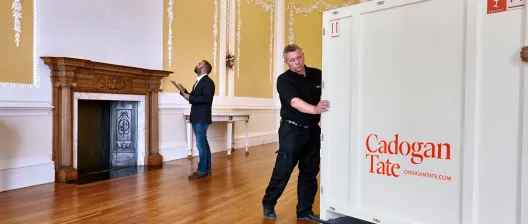Sotheby’s reports strong impressionist and modern art sales
There was a slight bit of concern about the art industry for the rest of the year, after artnet reported that the market had not performed well in the first quarter of 2013. The market intelligence firm stated that sales fell by seven per cent this year, compared to 2012. It explained that the reason for this was the weakening demand from China.
While it is important to keep a check on developments in what is arguably the most powerful economy in the world – in contrast to big, industrialised but ultimately stuttering Western economies – any diminishing demand is temporary. There is only so much buying that can occur, especially in this uncertain environment.
Therefore, when Sotheby’s announced that its evening sale of impressionist and modern art works had totalled some $250 million (approximately £162.2 million), there was no dramatic sigh of relief, far from it. Instead, there was more a feeling of self-poise, a kind of back-to-normal-business air of triumph. The art world, thank you very much, is doing rather well.
Simon Shaw, head of Sotheby’s impressionist and modern art department in New York, said that the results of the sale confirmed the vibrancy of a truly global art market for these types of works.
“We had the privilege of offering an extraordinary group of works from estate collections, which attracted collectors with remarkably consistency across media, styles and periods,” he added.
“We saw a great deal of activity in the room, on the phones and online, with bidders from 35 countries participating – this includes the greatest participation from Latin America and Asia that we have ever witnessed in an evening sale of impressionist and modern art at Sotheby’s.”
David Norman, chairman of the auction house’s impressionist and modern art department, commented how he is often asked what kind of movements and artists are currently in fashion, investment-wise that is. His response is that “quality” works of art are perennially popular. They will always be a good investment.
The highlight of the evening was the sale of Paul Cezanne’s Les Pommes, which went under the hammer for $41.6 million (£27 million). The still life painting of apples was hotly contested, driving up its price well above the pre-sale estimates.
Another notable sale was Amedeo Modigliani’s L’Amazon, a 1909 portrait of a woman in a tan riding jacket, which was snapped up for $26 million (£16.9 million), and Auguste Rodin’s Le Penseur. This iconic cast eventually went for $15.3 million (£9.9 million).
What this sale shows is that the appetite for impressionist and modern art works is increasing again. It isn’t as if these movements see significant dips in demand, but lately, auctions, in terms of blockbuster sales, have been dominated by post-war and contemporary pieces.
If popularity for both categories at auction continues as currently is, then the art world can quietly pat itself on the back for having engineered a robust market that has real growth potential for the rest of the year and beyond.
Cadogan Tate works with museums and galleries to deliver fine art storage solutions.



